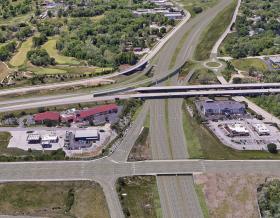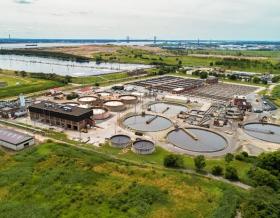




At Jacobs, we're challenging today to reinvent tomorrow by solving the world's most critical problems for thriving cities, resilient environments, mission-critical outcomes, operational advancement, scientific discovery and cutting-edge manufacturing, turning abstract ideas into realities that transform the world for good. With approximately $16 billion in annual revenue and a talent force of more than 60,000, Jacobs provides a full spectrum of professional services including consulting, technical, scientific and project delivery for the government and private sector.



As a purpose-led company, we know we have a pivotal role to play in addressing the climate emergency. We consider this not only good business, but our duty to channel our technology-enabled expertise and capabilities toward benefitting people and the planet.



For more than 70 years, our teams have provided integrated solutions to help solve the most complex and hazardous challenges of space exploration. We invent by imagining what’s possible.



Sit down with our visionary team of thinkers, dreamers and doers to see what a day in the life is like.



For more than 30 years, Jacobs has been responsible for planning and implementing Lead and Copper Rule-related strategies which protect millions of people in the U.S. and Canada. Our work includes enhanced water quality monitoring strategies, sampling plan development, harvested pipe-scale analysis, lead service line inventories and replacement plans, corrosion control studies and the incorporation of equity and environmental justice considerations into compliance programs.



Jacobs. A world where you can.



As our clients navigate the digital transformation and growing cyber risks, we have positioned ourselves at the forefront of this growth, adding digital capabilities, products and tools to serve a growing set of customers.



Jacobs is working to help clients across the United States secure federal funding for projects that make our cities and communities more connected and sustainable. Working hand-in-hand with clients from coast to coast and everywhere in between, Jacobs develops bold, innovative solutions to address the nation’s toughest challenges.



A curated selection of some of the top-listened to and trending podcast episodes from our popular If/When podcast series, which has over 4M downloads to date.



Now more than ever, we appreciate the hard work, sacrifice and dedication of the medical profession in ensuring the health and safety of our communities.



Together, we are stronger. Together, we can transform the future.



Together with our visionary partner, PA Consulting, we're establishing our position in high end advisory services, creating a springboard to expand in high value offerings beyond the core.



We work in partnership, delivering some of the most challenging, diverse and innovative projects and programs globally across multiple sectors. We integrate complex interfaces across planning, procurement and delivery to help unlock better social, environmental and economic outcomes from mega and giga projects.



We’ve provided design-build services to the water sector for over 25 years and delivered more than 150 projects. We offer fully integrated design-build and design-build-operate capabilities to tackle the most complex water challenges and work in close collaboration with our clients.



As climate change threatens water security around the world, more communities are turning to water reuse as a resilient water supply solution and embracing the OneWater principle that all water has value. Jacobs has been supporting clients with water reuse programs for decades, beginning with the first applications of advanced wastewater treatment technologies in the 1960s. We provide our clients with a full range of services, from water reuse feasibility studies to design, construction and operations.



Jacobs’ deep experience with advanced technology systems and our wide-ranging program support capabilities make us a premier partner at locations across the world. We deliver the right talent, tools and processes to support and enable our customers’ missions.



The National Air and Space Museum's One World Connected exhibit will tell the story of how flight fostered two momentous changes in everyday life: the ease in making connections across vast distances and a new perspective of Earth as humanity’s home. Below are some stories from Jacobs that also highlight the connections and digital solutions we are making around the world.



Stories that capture our partnerships and innovative impact for a more connected, sustainable world



The only certainty about the future is uncertainty. Resilience is an attribute of a smarter planet, and requires planning and adapting ahead of potential threats. We help our clients survive, recover, adapt and thrive.



As a lone drone flew over a runway at Hartsfield-Jackson Atlanta International Airport (ATL) on a Saturday morning in March last year, it marked yet another first for ATL.
With the drone flight, ATL became the first major airport in the U.S. to attain approval from the Federal Aviation Administration to fly in airfield space. The airport will use data captured from the drone, combined with topographical information and holographic imaging, to help guide planning for its new runway.
Earlier this year, Airports Council International named ATL the world’s busiest airport for the 20th consecutive year, and the airport remains the only one to ever surpass 100 million passengers in a single year – serving almost 104 million passengers in 2017. Not only does ATL boast impressive passenger and cargo numbers, it also facilitates nearly $80 billion in direct economic impact throughout Georgia.
But how does such a facility secure its position as the world’s most-traveled and efficient airport?
Answer: Building on its successes with a multi-billion-dollar capital improvement plan, which includes the new runway the drone footage will help guide.
And they’ve engaged our team to deliver construction management support services on the 20-year program – ATLNext – that will modernize the terminal and concourses, create new parking decks, construct a 440-room hotel, add the new runway and a new concourse and expand cargo facilities.
The projects kicked off in 2016 and are designed to boost capacity, renew and replace existing facilities and enhance ATL’s aesthetic appeal. As construction management consultant, our team is assisting the City of Atlanta and the Department of Aviation’s Planning and Development leadership in managing and administering construction contracts, assessing construction progress and quality and acting as an integral part of the airport’s management team.
In addition to increasing capacity with the new runway, concourse improvements, such as a gate expansion to accommodate the world’s largest passenger airliner, will also help ATL prepare to host even more passenger traffic in the future.
Before the gate expansion, ATL only had one gate that accommodated the Airbus A380, a double-deck, wide-body airplane that can seat up to 600 passengers. The second wide-body gate will open this year to facilitate better arrivals for international passengers, a growing priority at ATL. In 2017, ATL welcomed 12,033,865 international passengers – a 4.86 percent increase over 2016 numbers.
Throughout it all, ATL is committed to harnessing the latest technologies, like drones and more, to ensure continued efficiency and capacity – and Jacobs is excited to help pursue and achieve their goals for the next chapter in ATL’s growth and development.
Jacobs also holds an operations and maintenance contract to help maintain the airport’s facilities, such as the Central Passenger Terminal Complex, including the 1.2-million-square-foot Maynard H. Jackson International Terminal, domestic concourses, central utility plants, plane train tunnel, transportation mall and ground support equipment buildings.